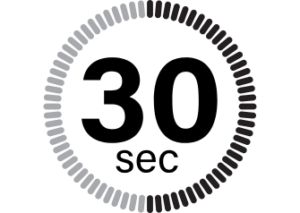At first glance, asking “how many seconds are in a day” might seem like a simple math question. But it’s actually more interesting than most people think. Timekeeping isn’t as fixed as we assume — Earth’s rotation, leap seconds, and atomic clocks all play a part in how we define a “day.”
The straightforward calculation gives us the answer:
24 hours × 60 minutes × 60 seconds = 86,400 seconds.
That’s the number of seconds in a standard day — the one our clocks measure every time the Earth completes a full rotation.
However, the story doesn’t end there. Some days are a fraction longer or shorter due to small variations in the Earth’s movement. We’ll explore how these differences occur, what leap seconds are, and how scientists and timekeepers manage such changes. You’ll also learn how to convert seconds into other time units — weeks, months, or years — and discover why understanding this simple calculation connects to much bigger ideas about time itself.
Basic Calculation: Deriving the Number
To find out how many seconds are in a day, we just need to break time into its basic parts — hours, minutes, and seconds.
Let’s start step by step:
- 1 minute = 60 seconds
- 1 hour = 60 minutes
Now, if we multiply the number of minutes in an hour by the number of seconds in a minute, we get the total number of seconds in one hour:
1 hour = 60 minutes × 60 seconds = 3,600 seconds
Since there are 24 hours in a day, we multiply again:
24 hours × 3,600 seconds = 86,400 seconds
So, there are 86,400 seconds in a standard day.
Here’s a quick breakdown for clarity:
| Time Unit | Conversion | Total Seconds |
| 1 Minute | 60 Seconds | 60 |
| 1 Hour | 60 Minutes | 3,600 |
| 1 Day | 24 Hours | 86,400 |
This simple formula forms the foundation of how we measure time. But as you’ll see in the next section, there are special cases when a day doesn’t have exactly 86,400 seconds.

Why It’s Usually 86,400, But Not Always
While a typical day has 86,400 seconds, the reality is that not every day fits this exact number. Earth’s rotation isn’t perfectly steady — it speeds up or slows down slightly due to natural factors. To keep our timekeeping accurate, scientists occasionally make adjustments known as leap seconds.
Leap Seconds: When and Why They’re Added
A leap second is a one-second adjustment added (or rarely subtracted) to Coordinated Universal Time (UTC) to keep it aligned with the Earth’s actual rotation. This happens because atomic clocks — the most precise timekeepers — tick consistently, while Earth’s spin can drift slightly.
For example, if the planet’s rotation slows down, we fall behind by a fraction of a second each day. Over time, this difference adds up. When it gets close to one full second, a leap second is added to synchronize atomic time with solar time.
(Source: Wikipedia – Leap Second)
Variation in Earth’s Rotation
Earth’s spin isn’t perfectly uniform due to:
- Tidal forces caused by the Moon and Sun, which gradually slow the rotation.
- Geological activity, such as earthquakes or glacial melting, which can slightly shift mass on Earth and affect its spin rate.
- Atmospheric and oceanic changes, where shifting air pressure or water currents alter how mass is distributed.
These natural fluctuations mean that one “day” can sometimes be a little shorter or longer than average.
(Source: Wikipedia – Day)
Examples of Days With 86,401 or 86,399 Seconds
Most days stay close to 86,400 seconds, but during leap second adjustments, this changes:
- A day with an added leap second has 86,401 seconds — for example, June 30, 2015, and December 31, 2016.
- If a leap second were ever subtracted (which hasn’t happened yet), that day would have 86,399 seconds.
These rare events remind us that timekeeping is not just about math — it’s also about the physics of our ever-changing planet.
(Source: Wikipedia – Coordinated Universal Time)
Types of “Day” and Their Durations
When we talk about a “day,” it’s easy to think it always means 24 hours — but that’s not entirely true. In astronomy and timekeeping, there are several different types of days, each measured a bit differently depending on what it’s based on — the Sun, the stars, or our clocks.
1. Solar (Mean) Day vs. Sidereal Day
A solar day is the time it takes for the Sun to return to the same position in the sky — for example, from one noon to the next. The mean solar day is what we commonly call 24 hours or 86,400 seconds.
However, there’s another kind of day called the sidereal day, which is measured by the Earth’s rotation relative to distant stars instead of the Sun. Because Earth also moves a little along its orbit while it spins, a sidereal day is slightly shorter — about 23 hours, 56 minutes, and 4 seconds, or roughly 86,164 seconds.
(Source: Wikipedia – Sidereal Time)
2. Apparent Solar Day
The apparent solar day is the actual time between two consecutive moments when the Sun crosses the same point in the sky (like local noon). Unlike the mean solar day, its length changes slightly during the year due to the Earth’s elliptical orbit and tilted axis.
That means some apparent solar days are a few seconds longer or shorter than 24 hours. Over time, these variations even out, giving us the average or “mean” solar day we use for clocks and calendars.
(Source: Wikipedia – Day)
3. Civil Day
A civil day is the one we live by — the 24-hour period from midnight to midnight, as measured by our clocks. It follows Coordinated Universal Time (UTC) and includes any adjustments made for leap seconds.
So, on a leap second day, a civil day may contain 86,401 seconds instead of 86,400. This ensures our time remains in sync with the Earth’s slightly irregular rotation.
(Source: Wikipedia – Coordinated Universal Time)
In short, while we casually think of a day as 24 hours long, scientists recognize multiple definitions — each precise in its own context, from astronomy to everyday life.
Real-World Implications & Applications
Understanding how many seconds are in a day goes beyond classroom math — it’s a key part of how our world stays organized, connected, and accurate. From international time standards to space exploration and digital systems, this simple calculation plays a major role in daily life and science.
1. Timekeeping, Atomic Clocks, and the UTC Standard
Modern timekeeping depends on atomic clocks, which measure time based on the vibrations of atoms — specifically cesium. These clocks are incredibly precise, with an error of less than a second over millions of years.
To keep our clocks in sync with the Earth’s slightly uneven rotation, scientists use Coordinated Universal Time (UTC). UTC is based on atomic time but occasionally includes leap seconds to align with solar time. Without this correction, our clocks would slowly drift away from the position of the Sun.
(Source: Wikipedia – Coordinated Universal Time)
2. Astronomical Calculations (Orbital Periods and Sidereal Time)
Astronomers rely on precise measurements of time to track planetary orbits, eclipses, and stellar movements. For example, the sidereal day — which is about 86,164 seconds — is crucial for observing the same star at the same position each night.
Even tiny errors in time can lead to big mistakes when calculating a spacecraft’s position or predicting an astronomical event. That’s why understanding variations in a “day” helps ensure accurate data in astrophysics and navigation.
3. Use in Programming, Physics, and Conversions
In the digital world, time is often measured in seconds — from timestamps in databases to countdown timers and system logs. For example:
- In programming, 86,400 seconds is commonly used to represent one day in calculations.
- In physics, scientists use seconds as the standard SI unit of time, essential for equations involving speed, acceleration, or energy.
- In engineering and computer systems, time conversions (seconds to hours or days) are crucial for tracking uptime, performance, and automation.
In short, knowing there are 86,400 seconds in a day may sound simple, but it’s at the core of how we measure, plan, and synchronize almost everything — from satellites orbiting Earth to the apps we use every day.
Beyond One Day: Scaling to Weeks, Months, and Years
Once you know there are 86,400 seconds in a day, it becomes easy to calculate the number of seconds in longer time periods like a week, month, or year. These conversions help in areas like data analysis, space missions, time tracking, and even everyday planning.
1. Seconds in a Week
A standard week has 7 days, so:
7 × 86,400 = 604,800 seconds
That means every week contains 604,800 seconds — nearly 605 thousand moments ticking by before another Monday arrives.
2. Seconds in a (Non-Leap) Year
A regular year has 365 days, so the total seconds are:
365 × 86,400 = 31,536,000 seconds
That’s over 31 million seconds in one year — each one counting toward the next orbit of Earth around the Sun.
3. Leap Year Adjustment
In a leap year, there’s one extra day (February 29), which adds another 86,400 seconds to the total.
So, for a leap year:
366 × 86,400 = 31,622,400 seconds
Leap years keep our calendar aligned with Earth’s position in its orbit since a full orbit takes about 365.25 days, not exactly 365.
4. Example Conversions
You can easily use this formula to calculate seconds for any number of days:
| Time Period | Calculation | Total Seconds |
| 1 Day | 24 × 60 × 60 | 86,400 |
| 7 Days (Week) | 7 × 86,400 | 604,800 |
| 30 Days (Month Approx.) | 30 × 86,400 | 2,592,000 |
| 100 Days | 100 × 86,400 | 8,640,000 |
| 365 Days (Year) | 365 × 86,400 | 31,536,000 |
These conversions show just how vast time really is when broken into seconds. What seems like a short minute quickly adds up to millions of seconds across weeks and years — reminding us how valuable each one truly is.
Common Mistakes & Misconceptions
Even though calculating how many seconds are in a day seems simple, there are a few common misunderstandings people often have about how time really works. Let’s clear up the most frequent ones:
1. Thinking Earth’s Rotation Is Perfectly Uniform
Many assume that Earth spins at a perfectly steady rate, giving us exactly 86,400 seconds every single day. But in reality, Earth’s rotation isn’t constant.
It can slightly speed up or slow down due to factors like:
- The gravitational pull of the Moon and Sun (tidal effects)
- Shifts in Earth’s core and surface mass
- Atmospheric pressure and ocean currents
These small variations add up over time, which is why scientists occasionally add or remove leap seconds to keep our clocks in sync with the planet’s rotation.
2. Confusing Sidereal Days and Solar Days
Another common mistake is mixing up sidereal days and solar days.
- A solar day (what we use on clocks) is based on the Sun returning to the same position in the sky — about 24 hours or 86,400 seconds.
- A sidereal day measures the time it takes Earth to rotate once relative to distant stars — roughly 23 hours, 56 minutes, and 4 seconds, or 86,164 seconds.
The difference occurs because Earth moves along its orbit as it spins, so it takes a little longer for the Sun to appear in the same position each day.
3. Ignoring Leap Seconds
Some people forget that leap seconds exist or assume every day is exactly 24 hours long. Leap seconds are added to Coordinated Universal Time (UTC) to correct for the slowing of Earth’s rotation.
When a leap second is added, that particular day lasts 86,401 seconds instead of 86,400. Though rare, these adjustments keep atomic time and solar time aligned.
By understanding these details — and avoiding these misconceptions — we get a clearer picture of how timekeeping actually works, from the ticking of an atomic clock to the motion of our planet in space.
Frequently Asked Questions (FAQ)
1. Is a “day” ever different from 86,400 seconds?
Yes. Most days are close to 86,400 seconds, but not all. When a leap second is added, that day becomes 86,401 seconds long. If one were ever removed, it would be 86,399 seconds. These changes happen because Earth’s rotation is slightly irregular, meaning a “day” can be a tiny bit longer or shorter than the average.
- How often are leap seconds added?
Leap seconds are added only when the difference between atomic time (TAI) and solar time (UT1) approaches one second. There’s no fixed schedule — sometimes several years pass without one. Since the first leap second in 1972, a total of 27 leap seconds have been added so far.
(Source: Wikipedia – Leap Second)
- How long is a sidereal day?
A sidereal day — measured by the time it takes Earth to rotate once relative to distant stars — lasts about 23 hours, 56 minutes, and 4 seconds, or 86,164 seconds. This is about 4 minutes shorter than the solar day we use for our clocks.
(Source: Wikipedia – Sidereal Time)
- Does day length change over centuries?
Yes. Over very long periods, Earth’s rotation is gradually slowing down due to tidal friction caused by the gravitational pull of the Moon. Scientists estimate that the average day lengthens by roughly 1.7 milliseconds per century. That may not seem like much, but over millions of years, it adds up — meaning ancient days were slightly shorter than they are now.











